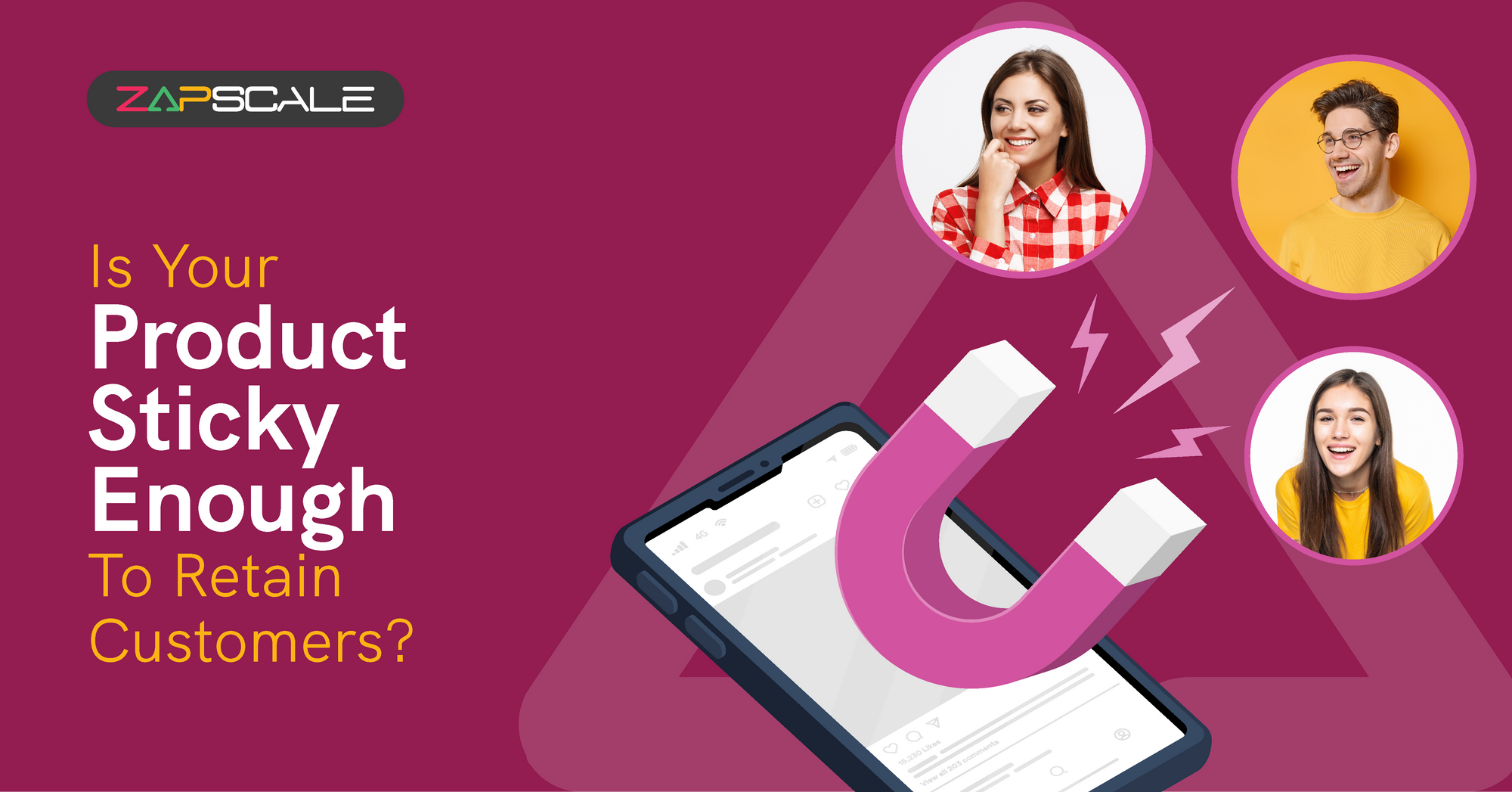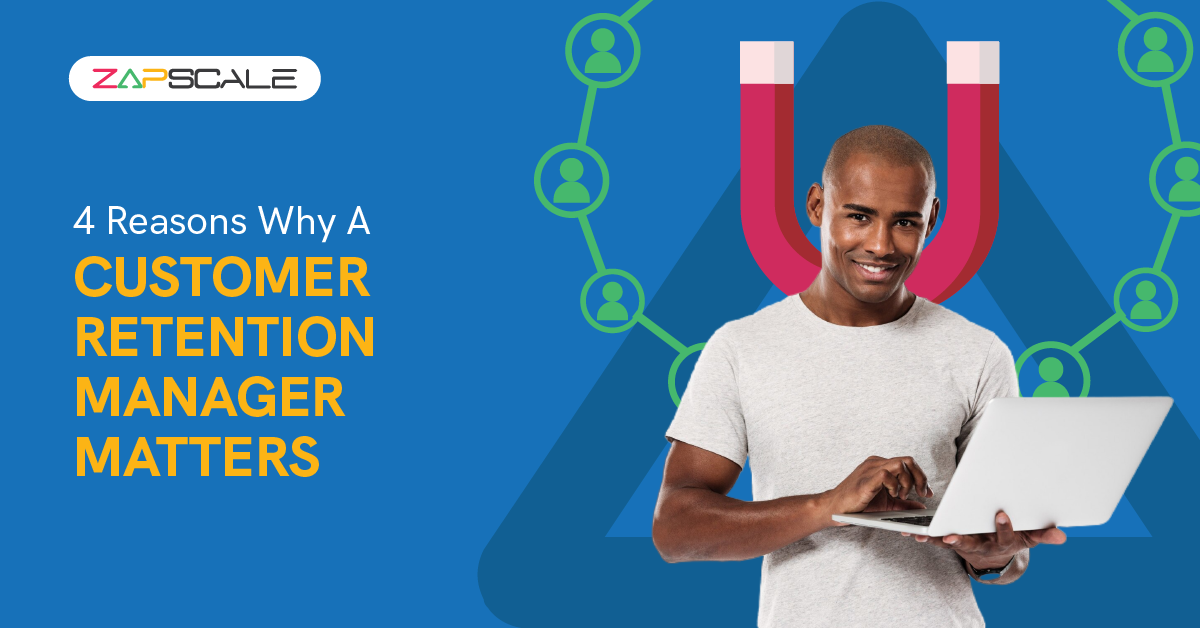CATEGORY > Customer Retention
7 Effective Customer Retention Strategies for SaaS
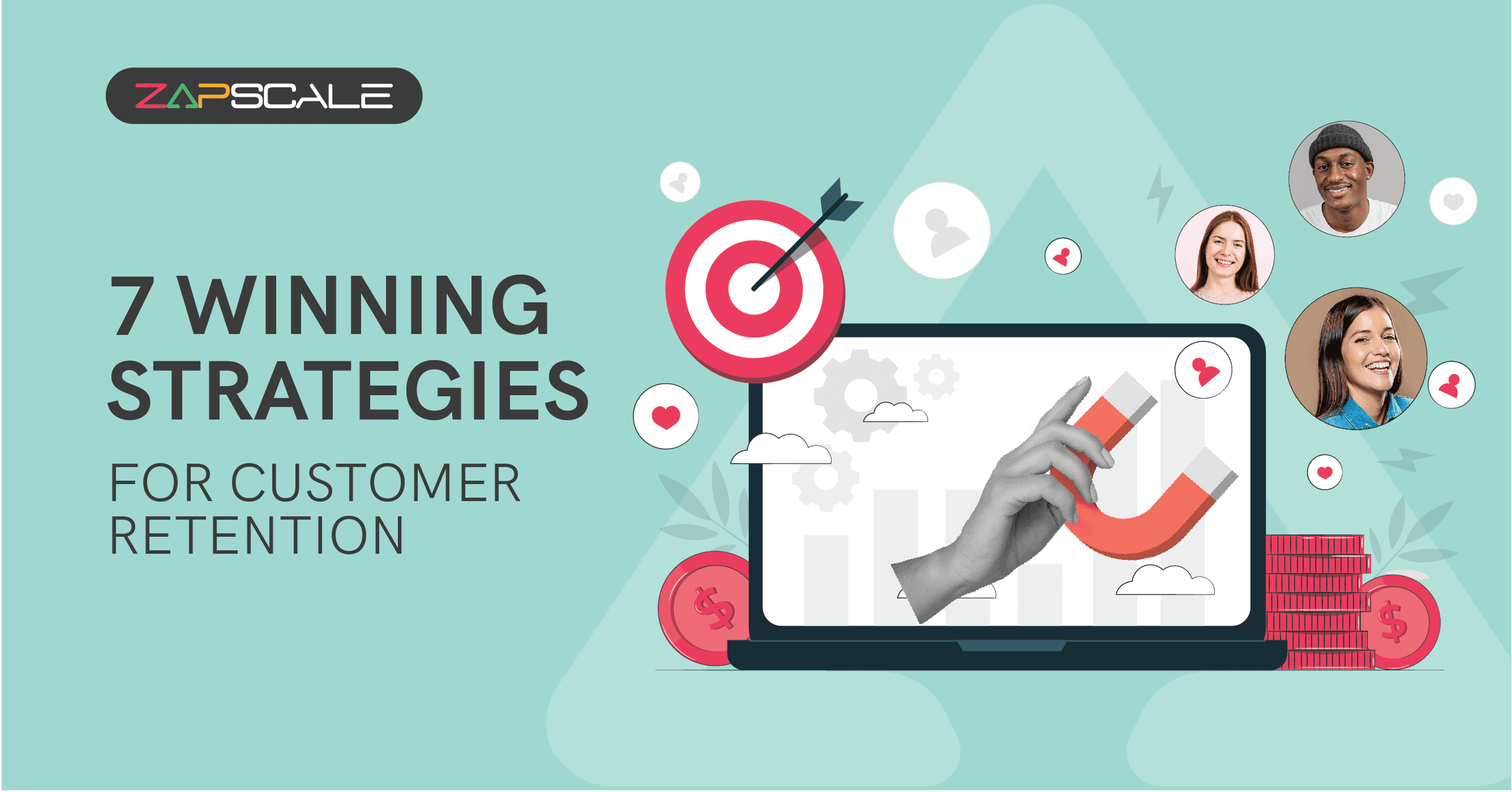
It is quite obvious that acquiring new customers is undeniably essential. However, the true measure of success is retaining these customers for longer to ensure the sustainable growth of a business. In a fiercely competitive landscape (especially in SaaS), and user expectations continue to evolve, SaaS providers must prioritize effective customer retention strategies to ensure sustained growth and profitability. This post dives deep into the 7 winning customer retention strategies SaaS businesses can implement to cultivate strong and lasting relationships with their customer base.
Importance Of Customer Retention In B2B SaaS
Customer retention in B2B SaaS is very crucial. Why? Because keeping your existing customers happy is often more cost-effective than constantly acquiring new customers.
Here’s why customer retention matters:
1. Steady Revenue Stream
Retained customers provide you with a reliable source of recurring revenue. It’s easier to predict and manage finances when you have a loyal customer base.
2. Lower Costs
Acquiring new customers usually costs more than keeping existing ones (that is something we are all tired of hearing but it is the truth). So, by focusing on retention, you save big time on marketing and sales costs.
3. Upselling Opportunities
Long-term customers are likelier to buy additional features or services since a longer lifetime suggests great satisfaction. This can boost your revenue without needing to bring in new customers.
4. Positive referrals
Long-term and satisfied customers are more likely to recommend you to others, helping you grow your business through word of mouth.
5. Feedback And Improvement
Retained customers provide valuable feedback. Their insights can help you improve your products and services, making them even more appealing to potential customers.
How To Benchmark Your SaaS Retention Metrics?
To benchmark your SaaS retention metrics, follow these steps:
1. Identify Key Metrics
Start by identifying which metrics are crucial for your SaaS businesses. The most common ones include net revenue retention, customer retention rate, and churn rate.
2. Gather Data
Gather historical data on these metrics from your records. Make sure your data is accurate and covers a sufficient period to provide a meaningful analysis.
3. Research Industry Standards
It is important to look into your industry benchmarks for your specific SaaS sector. This can be done through industry reports, SaaS surveys, or benchmarks provided by SaaS analytics firms. Knowing where you stand as compared to competitors can provide you with valuable insights.
4. Analyzing Trends
Compare your data against these benchmarks. Look for any patterns and deviations. Are you performing better or worse than the industry average?
5. Set Goals
Based on your analysis, set realistic retention goals. If you are below industry standards, focus on strategies to improve your performance. If you are above average, determine how you can maintain and improve your performance further.
6. Monitor And Adjust
Continuously monitor your metrics and compare them to your benchmarks. Adjust your strategies based on what’s working and what needs improvement.
7. Leverage Tools
Use SaaS analytics tools to track and visualize your retention metrics. Tools like Mixpanel, ZapScale, Amplitude, or even your CRM’s analytics can provide real-time data and help you make informed decisions.
When you regularly benchmark your retention metrics, you’re able to identify strengths and weaknesses, set appropriate goals, and drive continuous improvement in your customer retention efforts.
Top 7 Strategies for Effective B2B SaaS Customer Retention
1. Set Clear Expectations
It is imperative to have a clear understanding of the key challenges of the customers and what 'value' means for them. At the outset, it is entirely plausible that your perspective of 'value' might differ from that of your customers. Therefore, it is imperative to establish a shared understanding.
This alignment will ensure that you can set accurate expectations, adapt your product accordingly, and proactively meet and exceed those expectations. This approach will not only enhance the overall customer experience but also ensure the delivery of the desired value.
2. Smooth Onboarding
The onboarding phase is the first in-depth interaction your customer has with your product after completing the purchase. And hence, it needs to be well-structured, straightforward, and impactful.
The complexity of your customer onboarding process can directly (and negatively) influence customer engagement. If the customers lose interest at this step, it gets difficult to revive that 'feeling of excitement' they need to have for a successful product adoption.
Nobody likes to spend hours on registrations and integrations.
3. Provide Quick Solutions
When customers come up with a query or find it difficult to navigate through your platform, they need the issue fixed ASAP. Providing a quick response with a tailored solution is crucial in this situation. A comprehensive knowledge base or FAQ section can ensure a quick resolution of the problem with minimal manual intervention.
Additionally, proactively offering tips / push notifications at critical points in the user journey can ensure timely assistance and improve the overall experience with your product.
4. Always Appreciate Feedback
Regularly gathering feedback and reviews from your customer base is a pivotal strategy. Not only does it cultivate a sense of inclusion within your business and bolster customer's connection to your brand, but also underscores the importance of actively listening to their feedback.
This 2-way communication
💎 Fosters deep connection
💎 Instills trust, and
💎 Results in a more gratifying customer experience
5. Structure a Robust Customer Support Department
Effective after-sales support is paramount to enable a robust customer retention strategy. A robust customer support department serves as a frontline for addressing customer queries, issues, and concerns as and when they arise. Timely support builds trust, enhances user satisfaction, and fosters long-term relationships.
6. Track Customer Data
Harnessing and tracking customer data plays a pivotal role in driving a proactive customer success strategy. When you track customer data from all key touchpoints, it helps you gain invaluable insights into crucial elements such as customer behavior and product usage. This can allow you to reach out to customers with personalized assistance, recommendations, and pinpointed solutions before the customer realizes they need help.
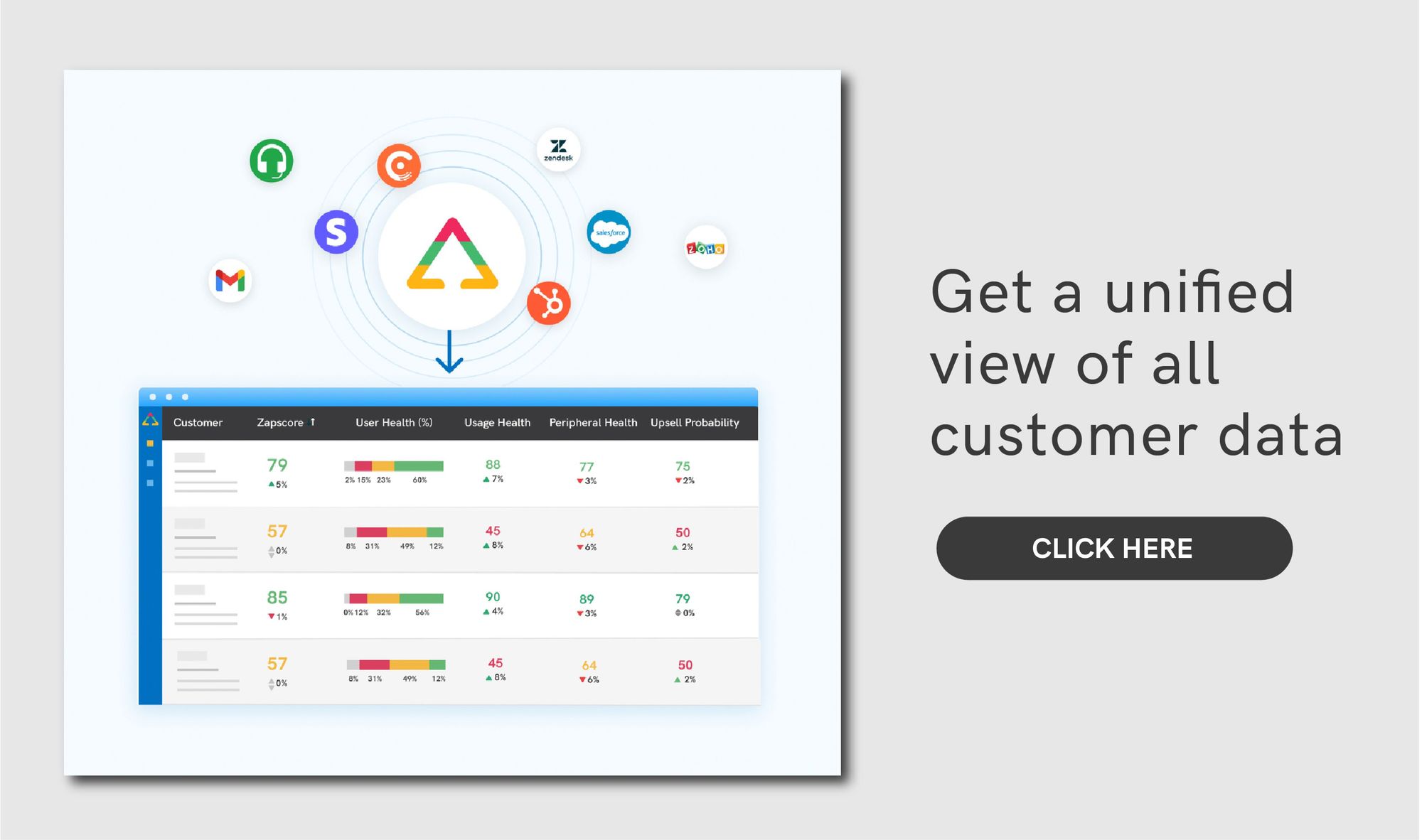
7. Personalization Always Work
One of the most effective strategies for customer retention is personalized service. Regardless of the breadth of features your company provides, customers seek individualized solutions.
Embrace personalization by actively capturing and addressing their unique needs. This tailored approach not only nurtures long-term customer relationships but also ensures their loyalty.
Increase Your Customer Retention Rate With ZapScale
In today's highly competitive SaaS landscape, customer retention and maximizing upsell potential are critical to sustained growth. However, identifying when a customer might churn or recognizing optimal moments for upselling has long been a challenge. ZapScale's AI model directly addresses this challenge, empowering SaaS businesses with the tools they need to stay ahead.
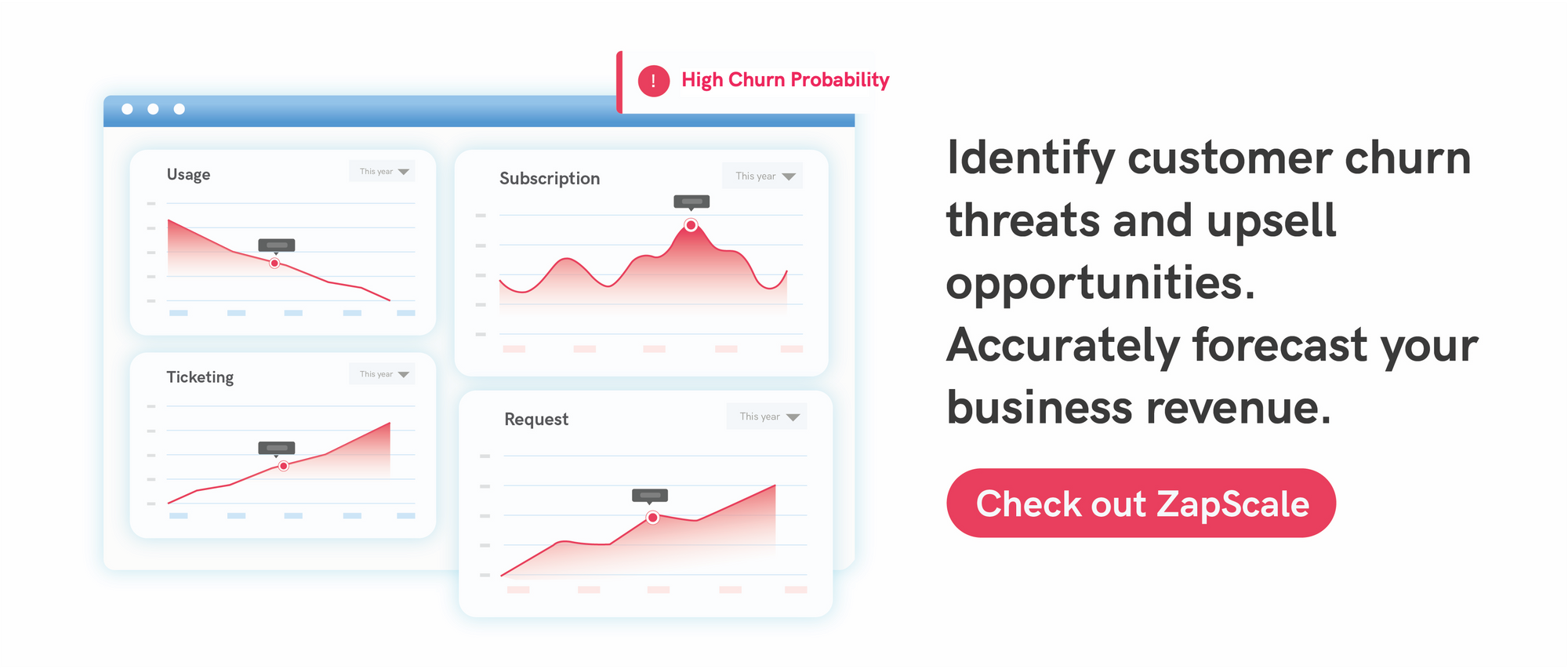
With the ability to capture and analyze over 150 data points using seamless integrations, ZapScale's AI model ensures that no critical insights go unnoticed. By harnessing the power of AI and leveraging a rich dataset, the model continually improves its predictive accuracy over time, empowering businesses with actionable insights to engage customers proactively.
FAQs
1. Why is customer retention important for SaaS businesses?
Retaining customers is crucial for SaaS businesses for long-term growth as it leads to steady revenue growth and reduces churn.
2. What are some effective strategies for customer retention in SaaS?
Providing excellent customer support, offering personalised experiences to customers, and continually delivering value to them are the key strategies.
3. How can I measure the success of my customer retention efforts?
You can track metrics like churn rate, Net revenue retention (NRR), and Customer lifetime value (CLTV) to gauge retention success for your business.
ABOUT THE AUTHOR
Popular from Customer Retention
Quality Content,
Straight To Your Inbox!
Subscribe for the latest blogs, podcasts, webinars, and events!

Write a Blog
If you have experience in CS and
a flair for writing, we’d love to
feature you.
Write to us on
hello@zapscale.com

